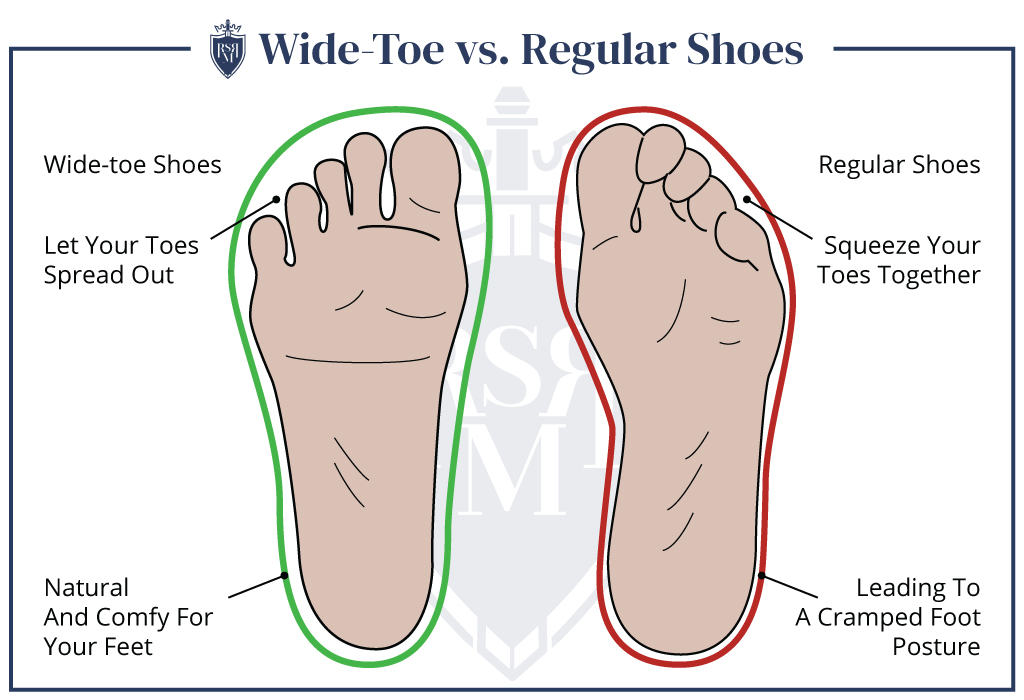Choosing the right footwear is crucial not only for comfort but also for our overall health. For many individuals, understanding the difference between wide and regular shoes can be a pivotal aspect of finding that perfect fit. Whether you’re running errands, going for a hike, or simply enjoying a day out, the right shoes can make all the difference.
Understanding Shoe Width: A Comprehensive Guide
Before diving into the specifics of wide and regular shoes, let’s understand how shoe widths are classified.
The Basics of Shoe Widths
Shoe widths are typically classified using letters, with “B” being standard for women and “D” being standard for men. The width can range from narrow (AA or 2A) to wide (E or EE). This classification is crucial for ensuring that your feet are adequately supported.
How to Measure Your Shoe Width
Measuring your foot width can help in determining whether you need regular or wide shoes. Here’s a simple method:
- Place a piece of paper on the floor and stand on it with your heel against the wall.
- Mark the widest part of your foot on the paper.
- Measure the distance between the two marks to get your width.
Comparing Wide and Regular Shoes

| Aspect | Regular Shoes | Wide Shoes |
|---|---|---|
| Width | Standard width for most feet | Extra space for broader feet |
| Fit | Snug but not restrictive | Roomy, comfortable fit |
| Comfort Level | Good for those with normal width feet | Better for those with wider feet |
| Health Concerns | Can cause discomfort if width is inadequate | Helps prevent issues like bunions or calluses |
| Availability | Widely available | Less commonly available |
Why Does Shoe Width Matter?
Wearing the correct shoe width can greatly impact your overall foot health. Here are some crucial points to consider:

Prevention of Foot Problems
Ill-fitting shoes can lead to several foot-related issues including:
- Bunions
- Blisters
- Plantar fasciitis
- Calluses
Performance and Comfort
For athletes and active individuals, the right shoe width can enhance performance. Wide shoes can provide more room for toe splay, improving balance and agility.

Common Myths About Wide and Regular Shoes
Myth 1: Wide Shoes Are Only for People with Large Feet
Many believe that only those with large feet need wide shoes. In reality, people of all sizes can have wider feet.

Myth 2: You Can Always Use a Size Up for Width
This is not true. Simply going up a size does not guarantee a broader fit, and it may even lead to other issues like lack of support.
Myth 3: All Brands Fit the Same
Different brands have varying size charts and widths. It is crucial to try on shoes before purchase.

Choosing the Right Shoe Width: Tips and Recommendations
When to Choose Regular Shoes
Regular shoes may be suitable for you if:
- You have narrow or average-width feet.
- You have no past history of foot problems.
- You prefer a snug fit for athletic activities.

When to Choose Wide Shoes
Consider wide shoes if:
- Your feet are consistently tight in regular shoes.
- You have experienced foot pain or issues.
- Your feet swell during activities or throughout the day.
Popular Brands Offering Wide and Regular Shoes

Nike
Nike offers a range of athletic shoes in both regular and wide widths, catering to various activities and preferences.
New Balance
Renowned for their commitment to comfort, New Balance features an extensive selection of wide shoes for various foot types.
Adidas
Adidas provides a good variety with some of their models available in wide sizes, blending style with functionality.
Profiles: Real-Life Experiences with Wide and Regular Shoes
Jenna’s Journey
Jenna, an active runner from California, struggled with chronic foot pain until she shifted to wide shoes. The change not only improved her comfort but also her running performance.
Mark’s Missteps
Mark, a teacher from Texas, always opted for regular shoes until he developed blisters. After consulting a podiatrist, he switched to wide shoes and found significant relief.
Expert Recommendations
Podologists frequently recommend trying on shoes later in the day when your feet are naturally swollen to get a more accurate fit.
Pros and Cons of Wide vs. Regular Shoes
Pros of Wide Shoes
- Better support for broader feet
- Reduced risk of foot issues
- Increased comfort during prolonged wear
Cons of Wide Shoes
- Less available options
- Can be pricier
- May not be suitable for those with narrow feet
Pros of Regular Shoes
- Widely available
- Generally more affordable
- Ideal for average foot sizes
Cons of Regular Shoes
- Can cause discomfort for wider feet
- Higher risk of foot-related issues
- Not ideal for athletes with specific needs
Conclusion: Find Your Perfect Fit
Understanding the difference between wide and regular shoes is essential. Whether you’re tackling a steep hill or strolling through the city, the right shoe can promote not only comfort but also overall foot health. Always prioritize your needs and consult with a professional if you’re unsure about your requirement. Your feet will thank you!
FAQs About Wide and Regular Shoes
What should I do if I’m between sizes?
If you find yourself between sizes, it’s usually recommended to size up, especially for athletic shoes, to ensure proper toe movement.
Are wide shoes more expensive than regular shoes?
Wide shoes tend to be similar in price to regular shoes, though some brands may charge a premium for specialty sizes.
Can I wear wide shoes if my feet are not particularly wide?
While it’s not recommended, if you find wide shoes more comfortable, you can wear them, particularly if your feet swell.
Citations and Further Reading
For more information on shoe sizing, you can explore the American Academy of Family Physicians insights on foot care.
For an in-depth understanding of the effects of shoe fit on foot health, refer to this study from the National Institutes of Health.